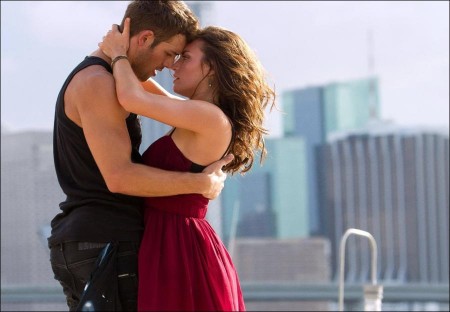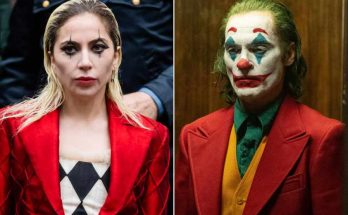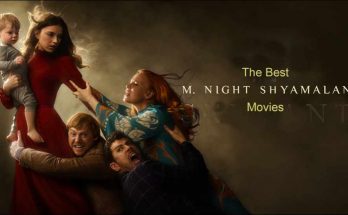Each time Jennifer Gibgot and Adam Shankman have launched a new Step Up film, they have made sure to match and then surpass the energy, diversity and complexity of the previous film’s dancing. But with Step Up Revolution, they have outdone all their previous efforts by scaling up the production values and bringing in more different styles of dance than ever before.
“From the very beginning, it was important to me to include the full spectrum of dance in this movie,” says director Scott Speer. “I believe everyone is naturally a dancer. And every style of dance is really about communicating. The Mob blends many different styles of movement into their flash mobs, including non-dance styles like parkour, which incorporates vaulting, rolling, running, climbing and jumping. I don’t think anyone has brought all of these different aesthetics together in a film.”
By juxtaposing the different styles, Speer believes that he not only shows how well they can work together, he also emphasizes the individual strength of each discipline. “They’re almost at their best when they’re all cut up against each other,” he says. “You really appreciate the hard-hitting hip-hop when you see it set up against the elegance of contemporary dance. That’s when you can best understand how universal dance is, which is one of the most powerful ideas in this movie.”
To pull together all the various elements, the producers brought back Jamal Sims, the prolific actor, dancer and choreographer who staged all three earlier films as well the recent remake of Footloose, the Madonna: Sticky & Sweet Tour and Hannah Montana: The Movie. “He has always done incredible work for us,” Gibgot. “We’ve been proud to watch him grow professionally.”
Sims was encouraged to take his creative spirit to the limit¡ªand beyond. “A big part of our evolution has been introducing new dance styles in each film,” Sims says. “Scott’s approach was that whatever I could dream up, he would try and make happen. He wanted to take as many different kinds of dance as possible and make them work together.”
Sims brought in a diverse team of choreographers to help realize Speer’s ambitious vision, including Chuck Maldonado, Chris Scott and Travis Wall. “Bringing other choreographers in ensured that the numbers all have a unique look and feel,” says Sims. “For example, Chuck is a stepper and he did Stomp The Yard 2. He helped us with the finale, which is an unbelievable blend of so many styles of dance. Chris has a strong tap background and worked with The LDX.
Travis has his finger on the pulse of the contemporary dance world. His pieces are very emotional and come from the heart of the movie.”
Wall was handpicked to choreograph Emily’s audition for a contemporary dance company. “We knew that we wanted someone different for that,” says Gibgot. “It’s a totally different style from the rest of the film and Travis could do that.”
“He has a different sensibility,” says Smith. “Kathryn McCormick trained as a contemporary dancer. She’s not schooled in hip-hop, which was heavily featured in the previous films. We still have lots of hip-hop dancing in the movie, but we made a choice when casting Kathryn to bring in something new. Travis was integral to realizing that.”
A duet between Sean and Emily, the dance plays into the film’s “Romeo and Juliet” romance. “Not only do they come from two different places and social strata, the way they dance is different,” says Smith. “Ryan brings a much more urban feel. Kathryn’s more lyrical.”
The choreographers worked hard to develop a unique look and feel for each of the large-scale production numbers. “The flash mob scenes are designed to be completely self-contained,” says Sims. “Each has a unique palette, location, theme and style of music. They are very different from each other.”
The pulsating Ocean Drive flash mob that opens the film is designed to grab the audience’s attention and not let it go until the film’s closing credits. “It is the very first time we see The Mob,” says Speer. “And it’s one of the biggest sequences in the film. It immediately establishes what is different about Step Up Revolution and captures the idea that these flash mobs are establishing a viral presence in the city. It is a great way to kick off the story.”
Sims says he always likes to hit hard as the film begins. “That sequence is in your face. It was probably the hottest day we had in Miami. The kids were dancing on top of cars and on the street. Every surface was scorching. We incorporated low riders, dancing with the cars bouncing to the rhythm of the track. There were so many different moving pieces that had to be coordinated and timed perfectly.”
Flash mobs usually use choreography that is simple enough for anyone to learn, but Sims took full advantage of the talent at his disposal. “The average person, or even the average dancer, would have a hard time pulling this off,” says Gibgot. “There were something like 60 people, including parkour artists, which added another exciting element to it.”
The settings provided as much inspiration as the music for the choreographers as they carefully crafted each of the unique set pieces. “Jamal, Travis and I all came together to choreograph the museum sequence,” says Chris Scott. “It was intense. We had people emerging from walls, a fiber optic ballet and several different styles that had to be integrated together. Sometimes the choreography drives the concept, but in this case the concept was driving us. We wanted to portray dance as fine art, just like you see in a museum. We made the dancers into living, breathing works of art. It’s magic!”
For the corporate-themed flash mob that marks The Mob’s first protest, Scott created a highly synchronized escalator ballet performed by identical drones in suits and ties. With dozens of dancers, it all had to be precisely coordinated to work. “They blend in with the business people,” says Smith. “They become part of the same faceless crowd¡ªuntil the performance begins. They all look the same and move simultaneously.”
Step Up Revolution ends with a breathtaking finale set in a shipping yard, a far larger space than Sims had ever worked in before. “This is a huge finale,” he says. “The space had so many possibilities and we wanted to take full advantage. We have the kids doing their rendition of The Warriors, really aggressive and dancing with props. We have a popping routine, then some of the top b-boys and trickers. Finally, we go into a lovely, sensual duet and all these different styles get mixed into one. In the end, it’s all connected and reflects the story of the two main characters.”
It was the most challenging number in the movie, according to the director. “We shot it over a period of five days,” Speer says. “It had multiple concepts that bled into each other and there was a lot going on visually with costumes, effects and all kinds of special elements. I couldn’t be happier with what we accomplished.”
Related Link: Step Up Revolution Movie Full Production Notes
Views: 315



